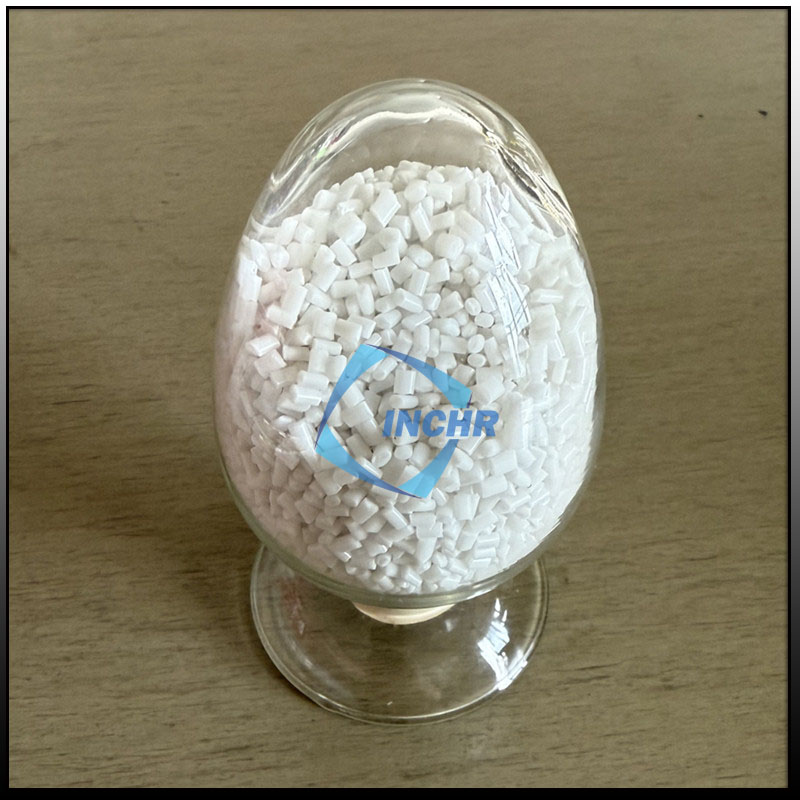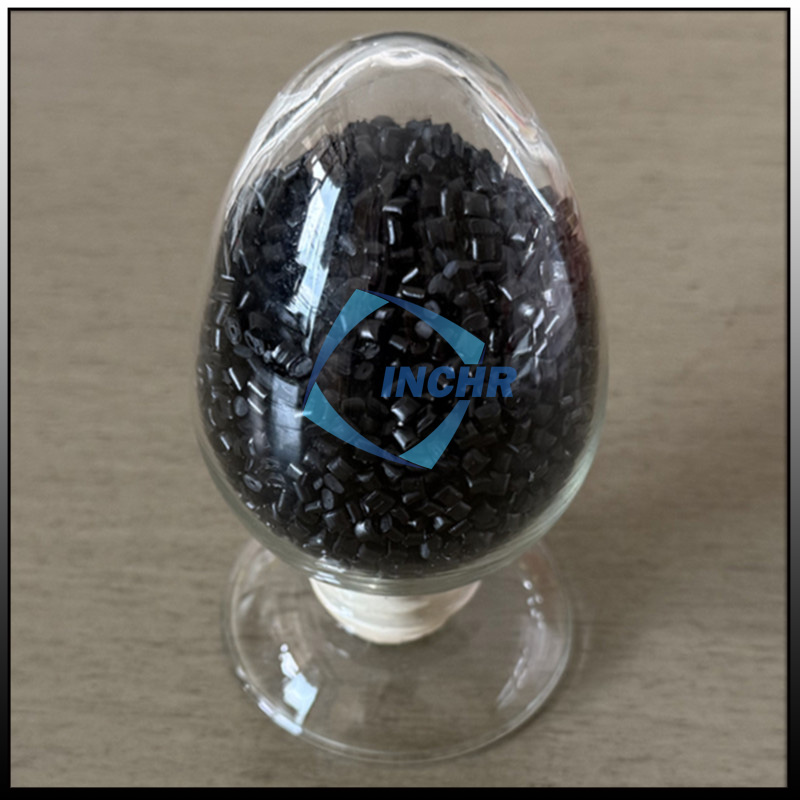In the field of plastic product production, PET have become the “star players” in packaging, electronics, optics, and other industries due to their excellent mechanical properties, chemical resistance, and environmental protection. However, during the processing, PET materials are prone to problems such as adhesion and high friction coefficient, which seriously affect production efficiency and product quality. At this time, INCHR@PET slip antiblock masterbatch has become a “magic weapon” to solve the problem. Today, let’s talk about how to use it correctly to make production more efficient!
Understanding INCHR@PET slip antiblock masterbatch
INCHR@PET slip antiblock masterbatch consists of carrier resin, anti-adhesion agent, smoothing agent, and various auxiliary additives. Anti-adhesion agents (such as silica) can form microscopic concave-convex structures on the surface of PET to reduce the contact area; smoothing agents (such as erucic acid amide) form a lubricating layer on the surface to reduce the friction coefficient. The synergistic effect of the two allows PET products to say goodbye to adhesion troubles and achieve a silky processing experience.

Key preparations before use
- Ratio selection is the basis
The recommended addition amount is between 0.3% and 1.0%. If the addition amount is too low, the anti-adhesion and smooth effect may not be obvious; excessive addition may affect the physical properties of the PET material itself, and even cause problems such as increased haze on the surface of the product. For example, when producing PET food packaging sheets, you can start with a small test at a ratio of 0.5% and fine-tune according to the actual effect.
- Drying treatment is essential
PET anti-adhesion and smooth masterbatch are more “sensitive” to moisture and must be pre-dried before use. Put the masterbatch into the drying equipment and dry it at 60-100℃ for 1-2 hours to remove trace moisture. Otherwise, moisture may cause defects such as bubbles and rough surfaces in the product during high-temperature processing, seriously affecting the quality.
- Even mixing is the key
Fully mix the dried masterbatch with the PET raw material to ensure that the masterbatch is evenly dispersed in the PET. The mixing time depends on the equipment and the amount of materials, generally 5-15 minutes, until the color and state of the two are completely consistent. Uneven mixing will lead to inconsistent product performance, and some areas may still have adhesion problems.
Key points for use in production and processing
Whether it is injection molding, extrusion or blow molding, the following points should be noted when using INCHR@PET slip antiblock masterbatch :
- Temperature control: The processing temperature needs to be fine-tuned according to the actual situation. The PET processing temperature is usually 250-280℃. If the temperature is too low, the components in the masterbatch may not be fully dispersed and play a role; if the temperature is too high, the lubricant may decompose and affect the effect.
- Equipment cleaning: Before changing raw materials or using masterbatch, be sure to thoroughly clean the processing equipment to avoid other residual materials from reacting with the masterbatch and affecting the performance of PET products.
- Real-time monitoring: During the production process, the surface state, friction coefficient, and anti-adhesion effect of the product should be observed at any time. For example, the sliding performance of the product can be tested by a friction coefficient tester. Once an abnormality is found, the master batch addition ratio or processing parameters should be adjusted in time.
Common problems and solutions
- White spots or particles appear on the surface of the product: it may be that the masterbatch is unevenly dispersed or not dried sufficiently. Re-extend the mixing time, increase the drying temperature, or replace the masterbatch with better dispersion.
- Poor anti-adhesion effect: Check whether the addition ratio is too low or the humidity of the production environment is too high. Appropriately increase the amount of masterbatch and control the humidity of the production workshop.
- The transparency of the product decreases: it may be that the anti-adhesion agent is added excessively. Reduce the addition ratio of the masterbatch and choose an anti-adhesion agent product with a smaller particle size and better optical properties.
The correct use of INCHR@PET slip antiblock masterbatch can not only effectively solve the adhesion and friction problems of PET materials, but also significantly improve production efficiency and product quality. I hope this guide can help you in actual production so that each batch of PET product can achieve the desired effect!




